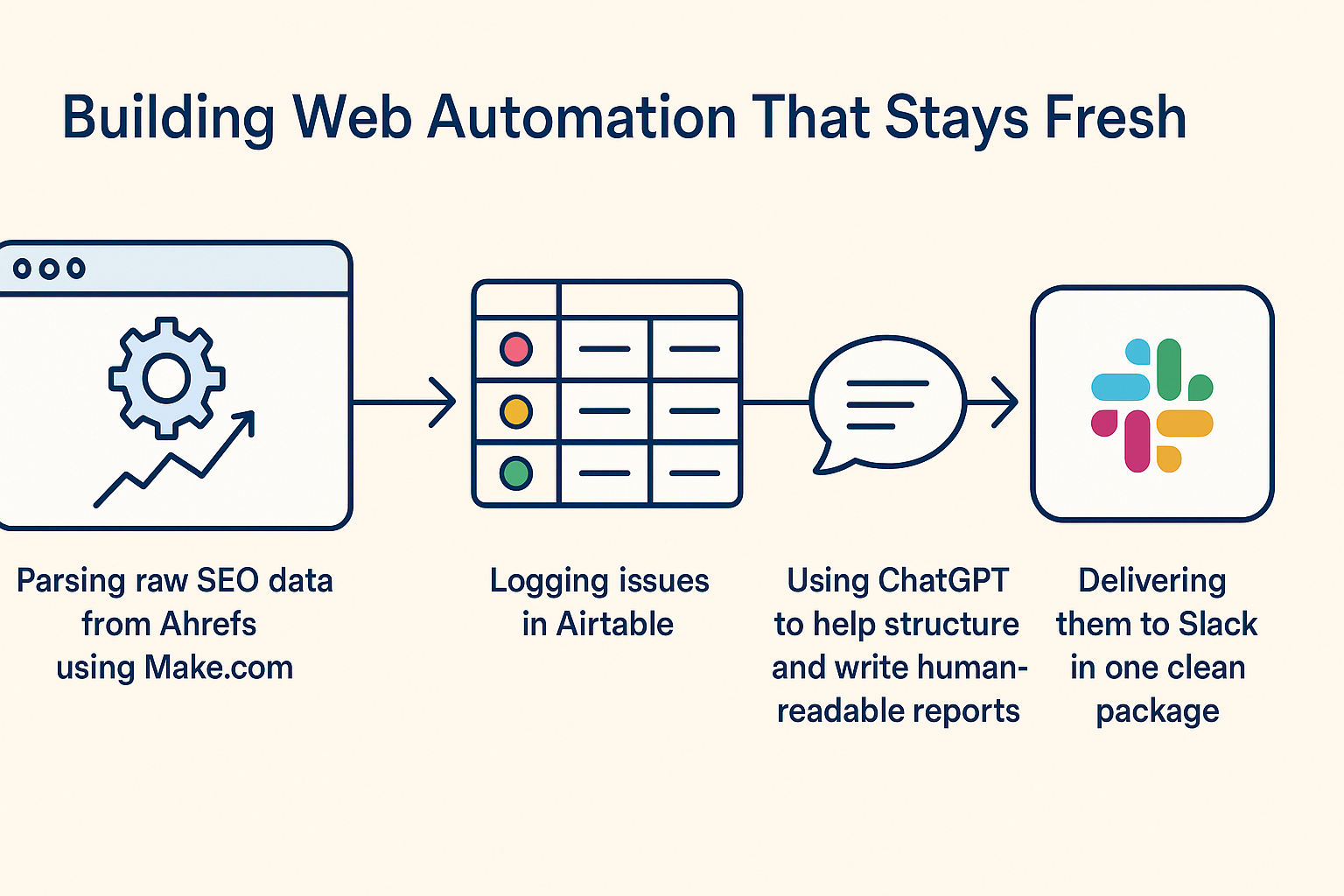Automation is a tempting promise — build it once, and your job’s done.
But if you’ve ever tried to automate web operations, you know that’s rarely the case.
Platforms change. APIs break. Reports silently fail. And without warning, your automation starts giving you outdated or incomplete data.
That’s exactly what happened to me.
I built an SEO automation workflow that worked beautifully… until it didn’t.
This post is about how I fixed it — and how I keep it useful today.
Why My First SEO Automation Broke
I had stitched together a system that:
- Pulled issue data from Ahrefs
- Parsed it through Make.com
- Logged findings in Airtable
- Used ChatGPT to write human-readable SEO reports
- Delivered those reports to Slack for review
For a while, everything ran like clockwork. But one week, the reports didn’t come through.
A field had changed in the source file. No error message. Just… silence.
That’s when I realized:
An automation is only good if it’s being maintained.
My Updated SEO Automation Workflow (That Actually Works)
Here’s the SEO reporting system I use today — one that’s flexible, trackable, and easier to troubleshoot:
1. Collect SEO Issue Data from Ahrefs
Ahrefs gives me a detailed site audit, highlighting broken links, missing metadata, and more.
2. Parse and Organize It with Make.com
I use Make.com (formerly Integromat) to clean up and structure the raw SEO data. This saves hours of manual formatting.
3. Log All Issues into Airtable
Airtable acts as my living database — I can filter by issue type, affected URL, and even track fixes across time.
4. Generate Clear Reports with ChatGPT
I feed the structured Airtable data into ChatGPT to create clear, readable monthly reports — written like a human, not a machine.
5. Send Final Reports to Slack
The finished report is posted directly in Slack, so it’s easy for my team (or clients) to review without checking ten different tools.
What I’ve Learned About WebOps Automation
I no longer aim for “full automation.” I aim for useful automation — systems that stay clear and functional, even as things change.
Here are some lessons I’ve picked up:
- Start with clarity. Automate only what’s truly valuable.
- Build for humans. A fast report is useless if it’s confusing.
- Let AI assist, not lead. ChatGPT is a great writing partner — but not a decision-maker.
- Expect to tweak. Good workflows evolve over time.
SEO Automation Isn’t Done — It’s Maintained
The idea of “set and forget” doesn’t work in web operations.
Real value comes from building workflows that can adapt when things shift.
If you’re trying to build an SEO automation workflow, I hope this gives you a practical starting point.
And if you’re already deep in WebOps like I am — I’d love to learn what’s working for you.
